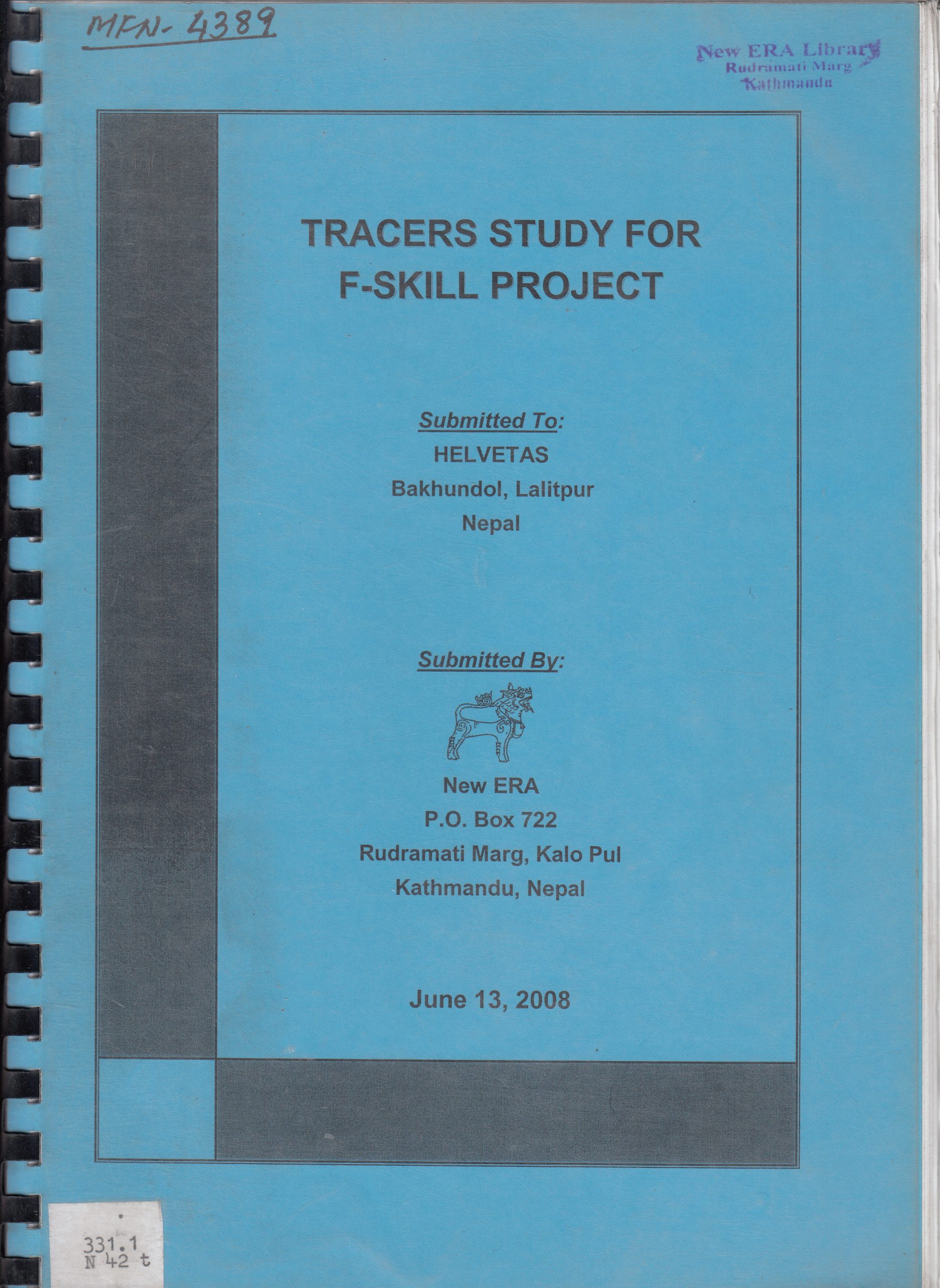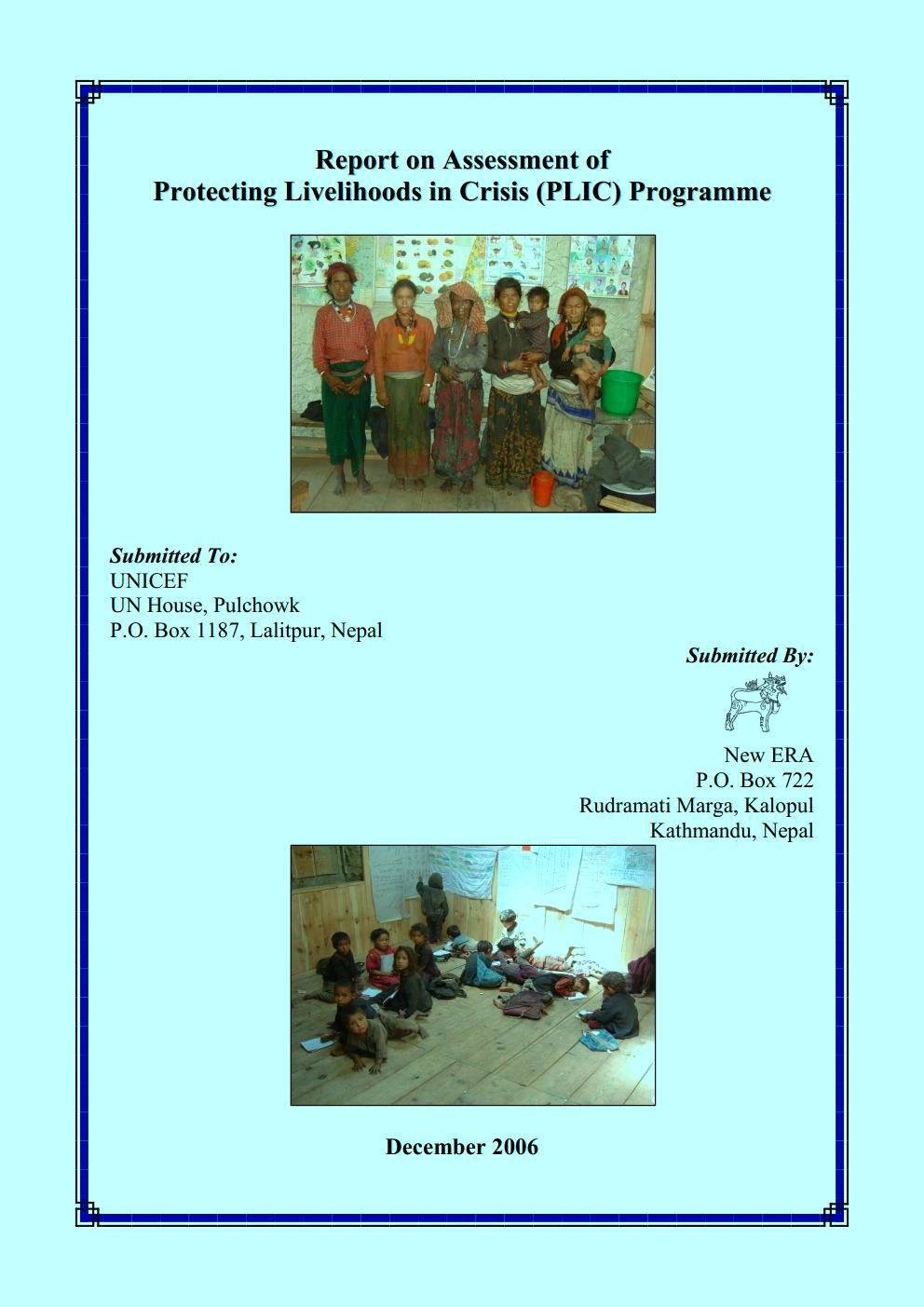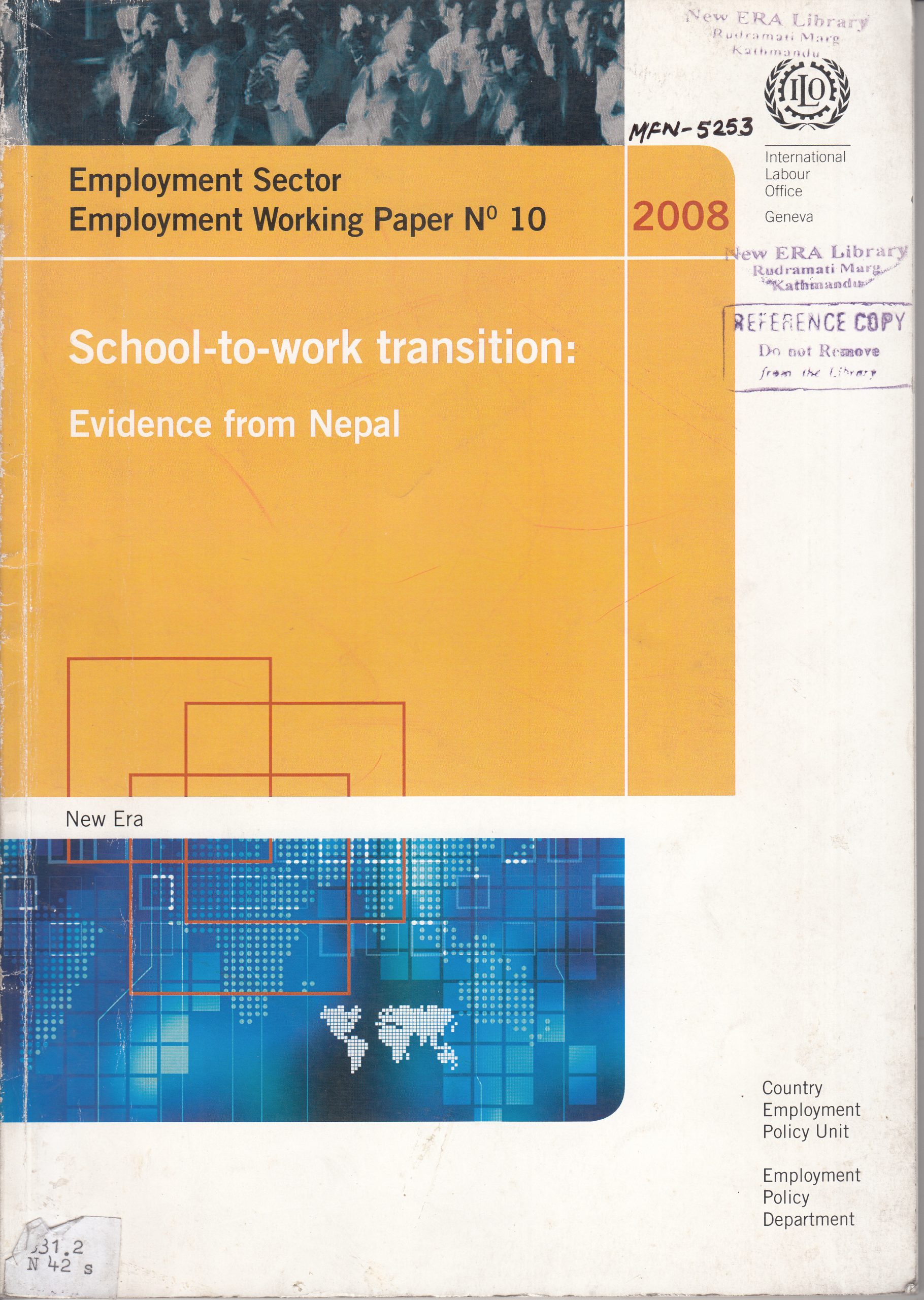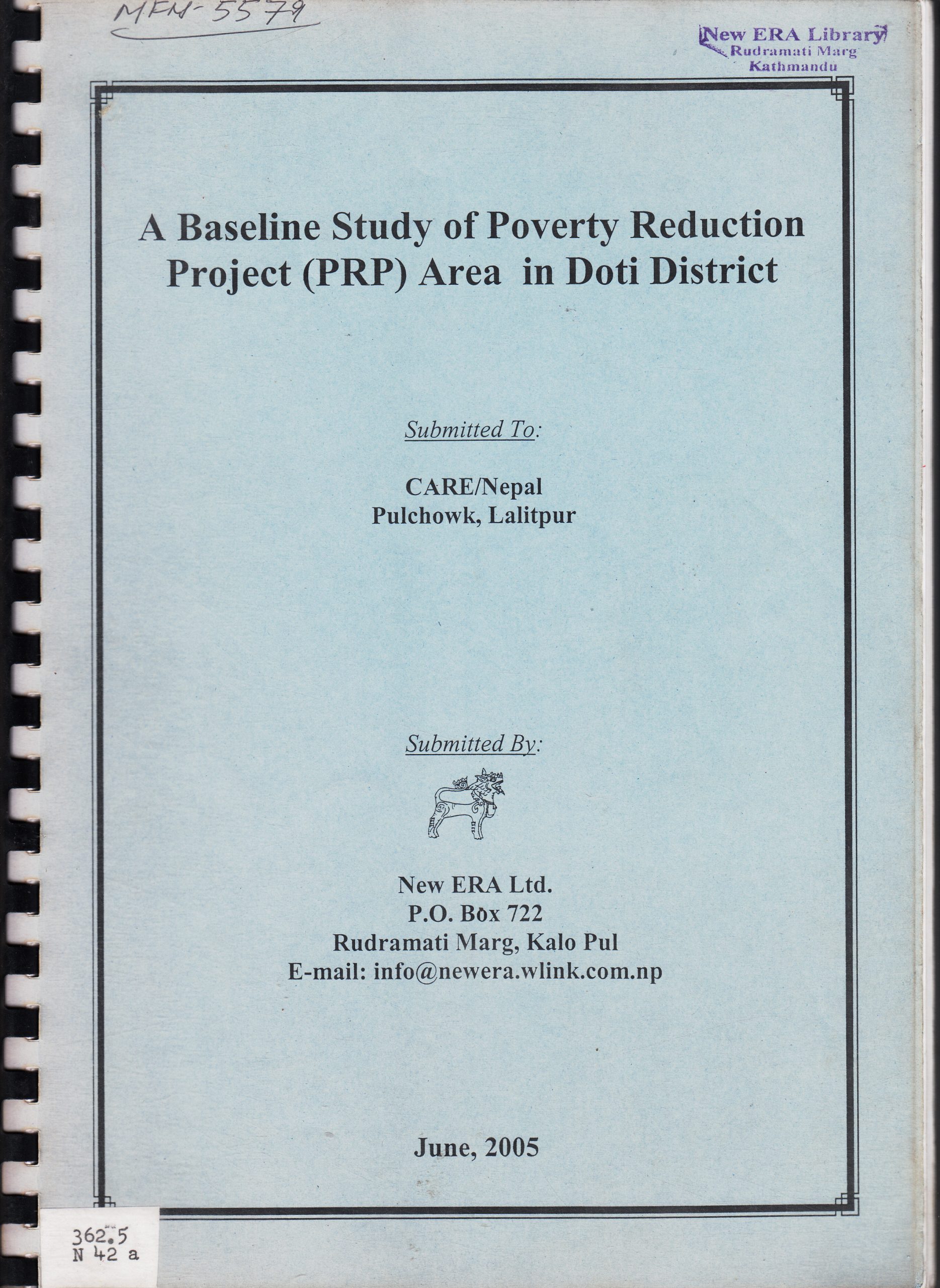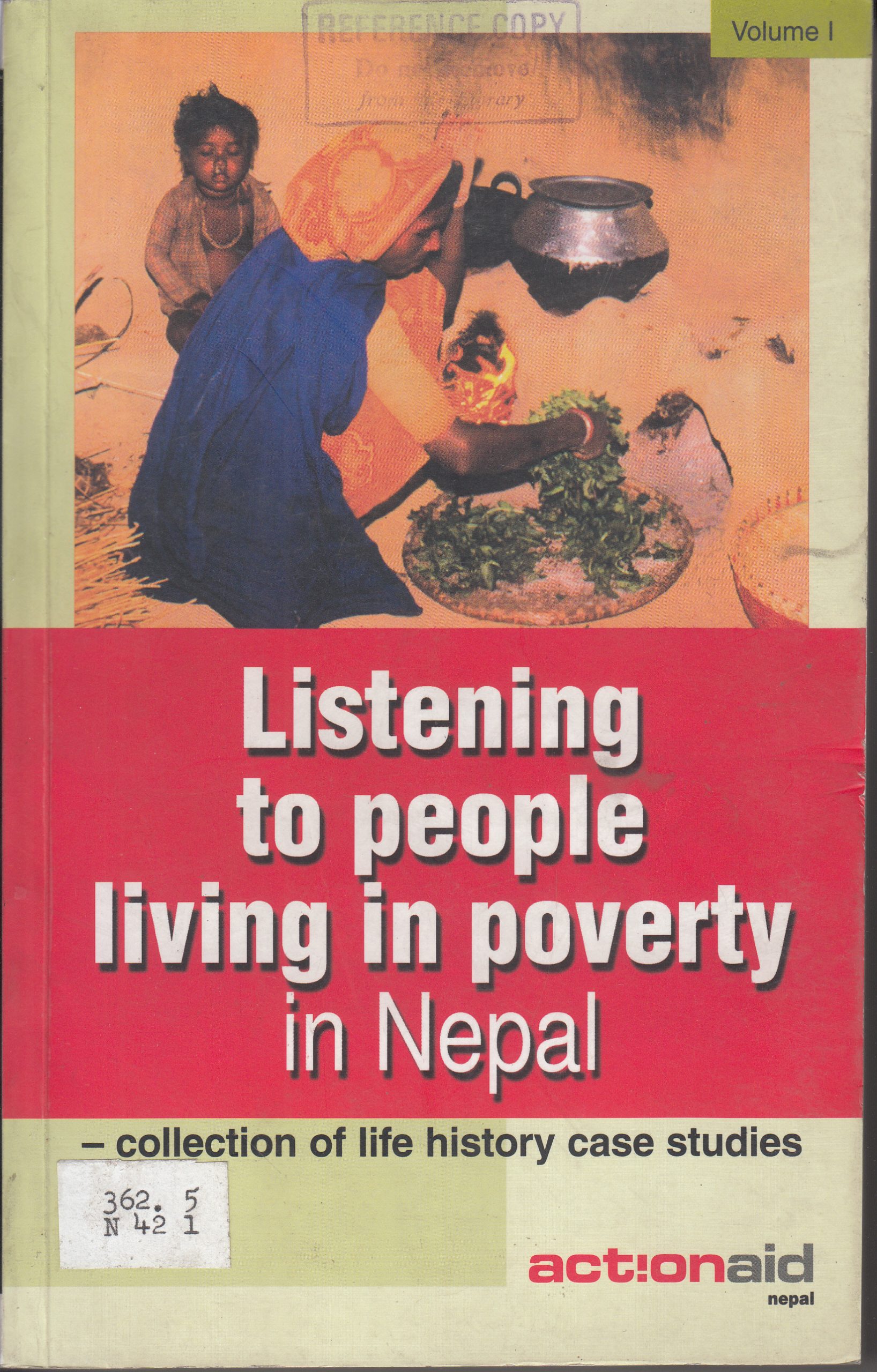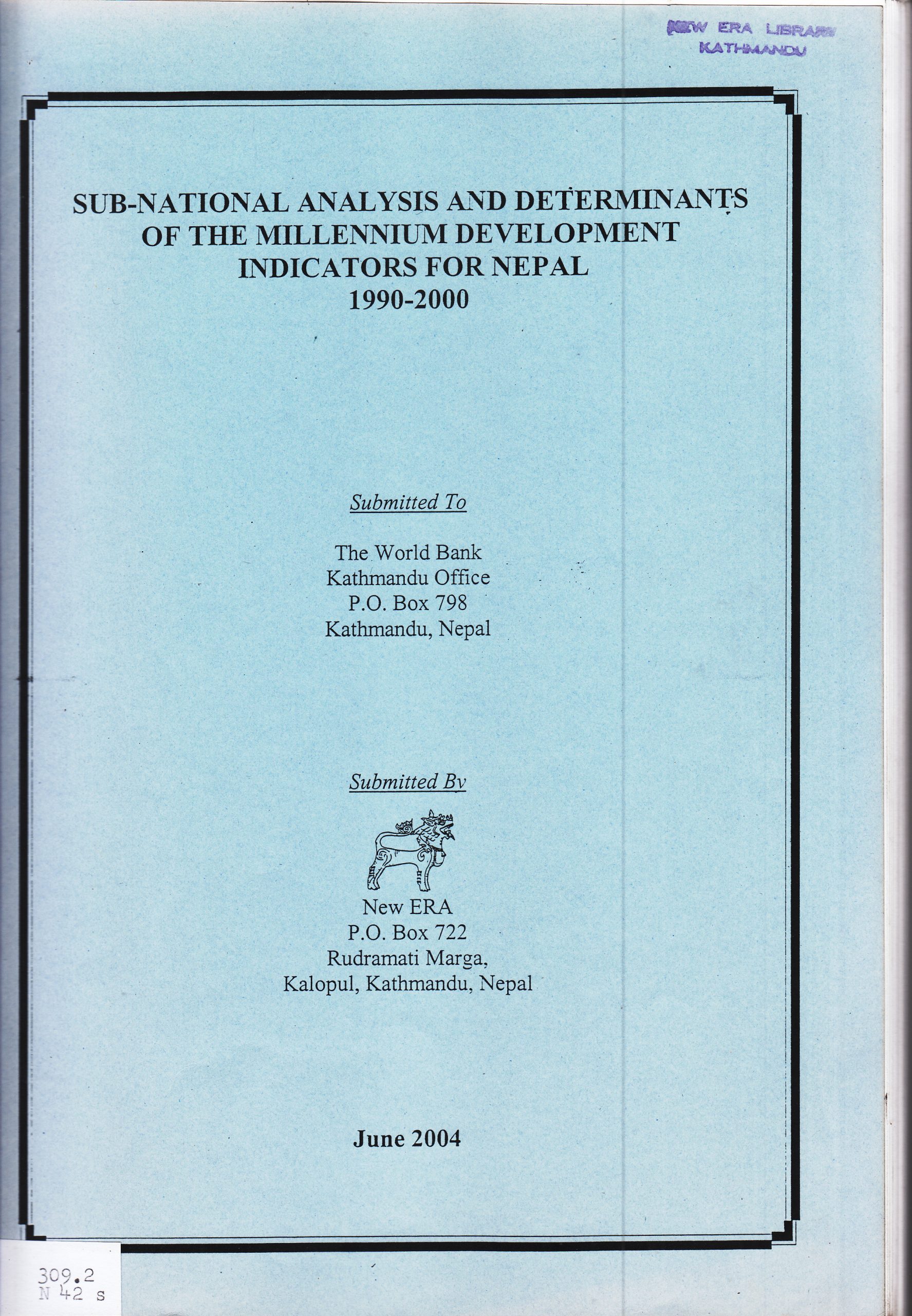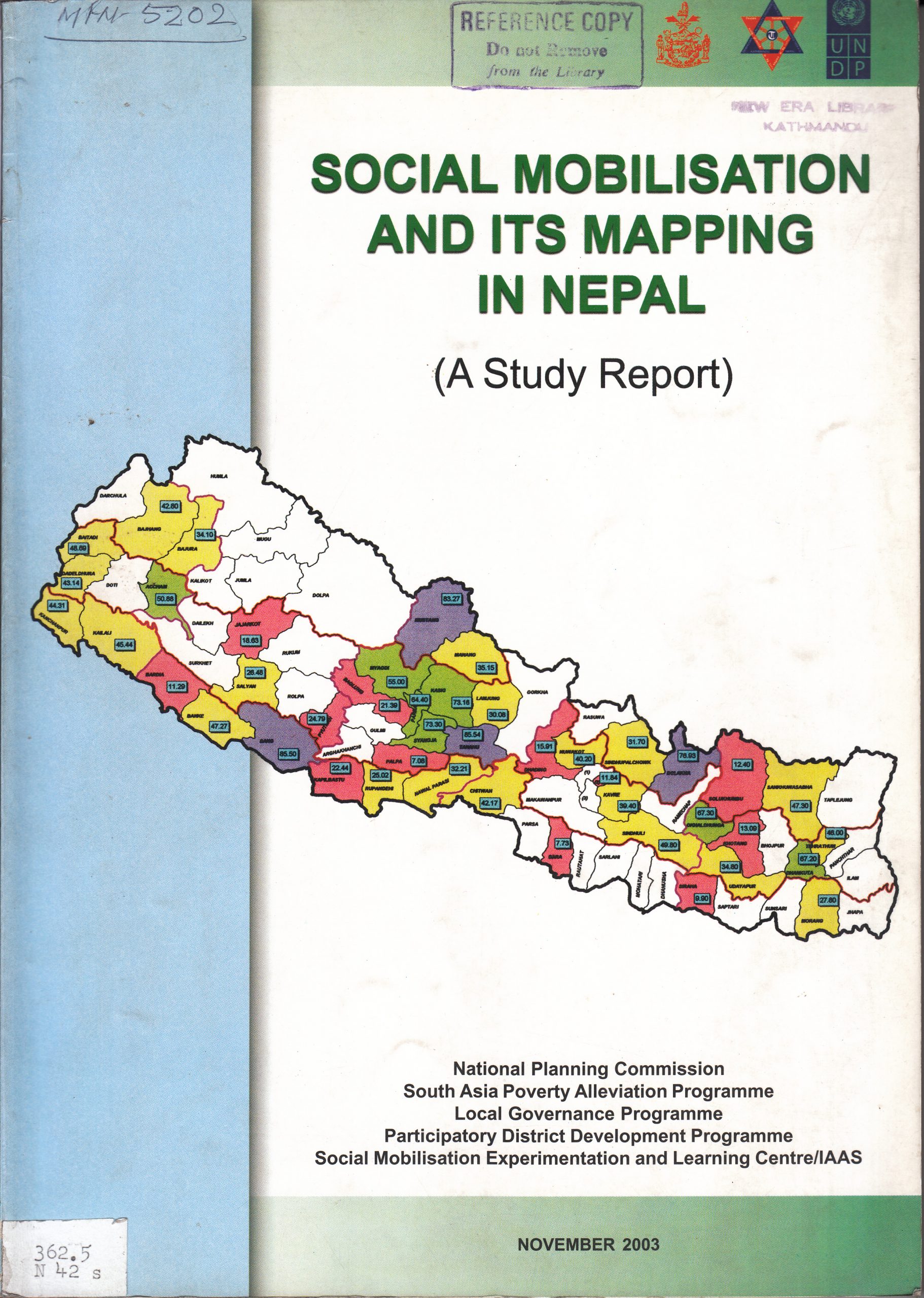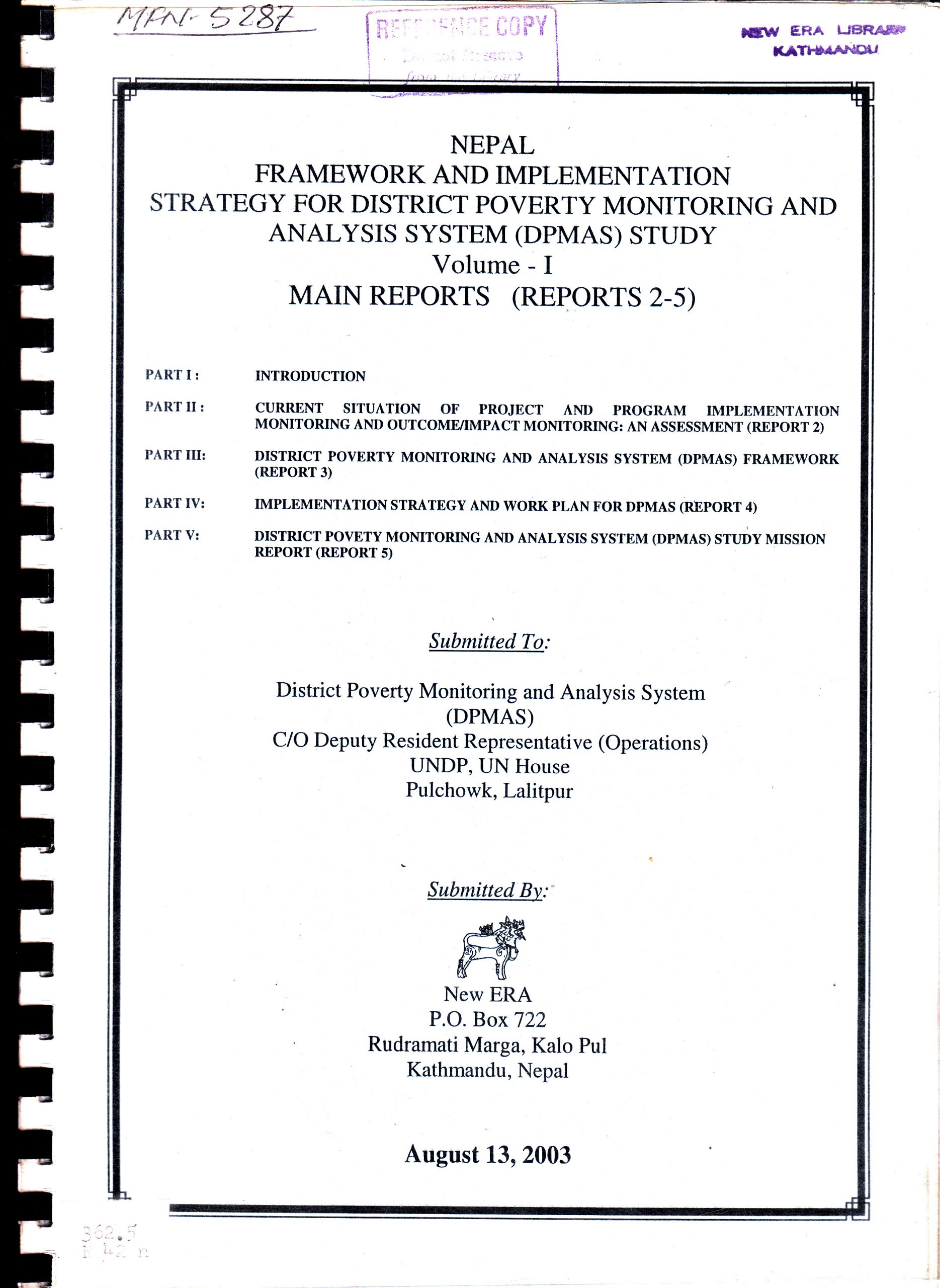This study examined the quality and quantity of outcomes reported by F-SKILL and assesses the impact of FSKILL training and employment activities. It also appraises the ability of F-SKILL training to contribute to new
employment opportunities, addressing disadvantaged and conflict victims and improving skills for employment or
setting up one’s own enterprise, and also ascertains the sustainability of the approach. The study provides an
insight into the effectiveness of the training program, and the conclusions drawn and recommendations made
based on the findings are useful for further planning and implementation.
Report Type: Economic Development
Pilot Survey of the Use of Labor in Backward Village Communities in Nepal
This study sponsored by the Japan Society for the Promotion of Science (JSPS) assesses the income, employment, technological level and gender differences in various income generating activities of the people in rural Nepal. The major income generating activities in the Nepalese countryside have been classified into four broad categories – agriculture, industry, commercial services and public services. This study also tries to uncover gender differences in each activity.
Report on Assessment of Protecting Livelihood in Crisis (PLIC) Programme
Protecting Livelihood in Crisis (PLIC) program was implemented by UNICEF and WFP in collaboration with DFID in nine districts of Mid-western and Far-western Development Region with aiming to improve the socio-economic situation of the people affected by conflict. This study was to assess the effectiveness of the program and the capacity of the NGO’s to implement it in conflict situations, so that it serves as a guide for future PLIC programs. The information was carried out from selected districts with parameters of nature of interventions, accessibility, ethnicity, and age of program.
School-to-work Transition Survey (SWTS) Among Youth in Nepal
This study inspects young Nepalese making the transition from school to work. The survey looks at young people in three age brackets (15-19 years, 20-24 years and 25-29 years) at various stages of transition: (i) Not transited: Still in school with no intention of seeking a job; (ii) In transition: Not in school, unemployed or looking for a regular job; and (iii) Transited: Employed in a regular job. The “transited” category is further broken down into those finding the transition (i) Easy, (ii) Middling, or (iii) Difficult. Information on possible influencing factors including gender, education level, social status and economic situation of the young people were collected.
A Baseline Study of Poverty Reduction Project Area in Doti District
CARE Nepal, in collaboration with local partner Samaj Sewa, implemented a poverty reduction project in Doti District to improve the social status of dalits, women and land-poor through greater inclusion and acceptance in society. This survey establishes baseline information about the target group using indicators such as socioeconomic status, educational status, and social and equity issues. The study also assesses the capacity of the selected partner organizations to undertake program activities.
Review of Women’s Reproductive Health Status and Poverty in Nepal
This study establishes an empirical basis for scaling up interventions to improve the reproductive health of women. The study gives an accurate picture of the reproductive health status and needs of women, particularly poor women, in Nepal; identifies district disparities in women’s reproductive health and their characteristics; determines the household and individual characteristics that affect poor women’s reproductive health; and demonstrates the links between poverty/inequality and women’s reproductive health status. The study includes a comprehensive and thorough review of available policy, plans and program documents.
Listening to the People Living in Poverty in Nepal
This study was conducted to understand poverty, marginalization, exclusion, deprivation and injustice faced by
the people living in poverty from their personal experiences. It collects their perceptions on the contribution of
government and non-government institutions in poverty reduction efforts. The research was carried out using
semi-structured interviews, focus group discussions and in-depth life history case studies in 20 VDCs of 10
sample districts
Sub-National Analysis and Determinants of the Millennium Development Indicators for Nepal 1990 – 2000
There are eight major Millennium Development Goals (MDGs): (i) eradicate poverty; (ii) achieve universal primary
education; (iii) promote gender equality and empower women; (iv) reduce child mortality; (v) improve maternal
health; (vi) combat HIV/AIDS, malaria and other diseases; (vii) ensure environmental sustainability; and (viii)
develop a global partnership for development. This study determines the status and progress of Nepal in
achieving the eight MDGs by looking at Millennium Development Indicators (MDIs). The study examines some
socio-economic indicators at the sub-national level and regional level for three points of time during 1990, 1995
and 2000.
Social Mobilization and Its Mapping of in Nepal – A Study Report
Social mobilization has a long history in Nepal but no commonly accepted definition existed and it was interpreted in different ways by different persons/agencies for their purposes. This study has attempted to build consensus on definition, modality, components and target achievement indicators of social mobilization. It explores the extent to which social mobilization was actually used as a major strategy for poverty reduction; prepares social mobilization maps showing the program areas of various agencies, program activities and coverage; and assesses the cost effectiveness and sustainability of different models of social mobilization.
Nepal – Framework and Implementation Strategy for District Poverty Monitoring and Analysis System (DPMAS) Study
Monitoring and evaluation is perhaps one of the least prioritized areas in development context of Nepal in terms of appropriate system development and its effective implementation. This study analyzes the existing information flow and information management in six sample districts and assesses the quality, collection efficiency and the information used in planning for the basic purpose of poverty reduction. It also analyzes the capability of the DDCs and DLAs in data generation and analysis for planning and monitoring purposes with basic focus on poverty monitoring. The study presents a Model Framework for DPMAS with variants, including the institutional framework, input/output monitoring of poverty reduction policies and activities, key poverty outcome and impact indicators and recommends the necessary Management Information System (MIS). It also contains an implementation strategy for the DPMAS.



